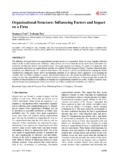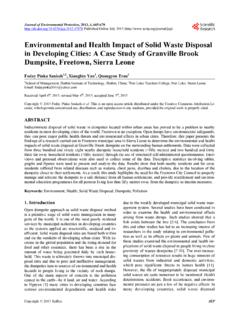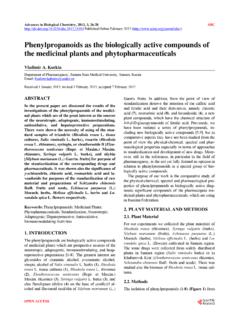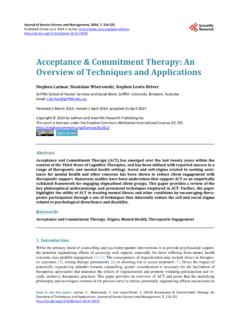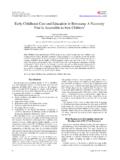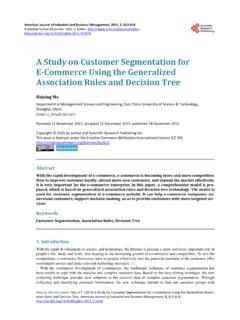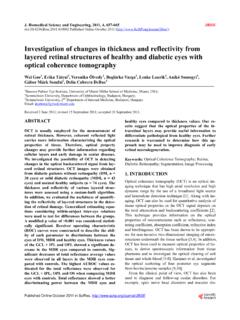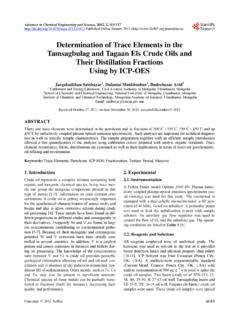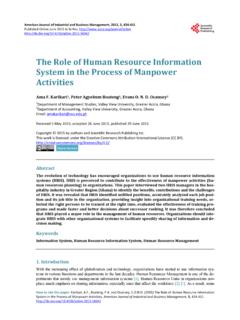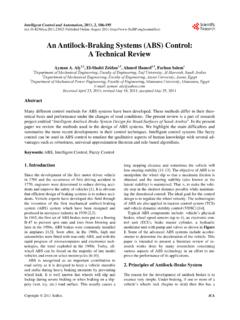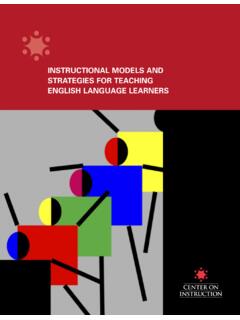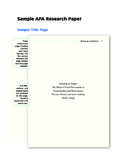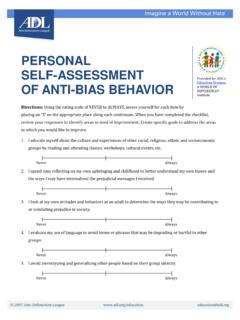Transcription of Psychology of Light: How Light Influences the Health and ...
1 Psychology , 2015, 6, 1216-1222 Published Online August 2015 in SciRes. How to cite this paper: Tomassoni, R., Galetta, G., & Treglia, E. (2015) . Psychology of Light : How Light Influences the Health and Psyche. Psychology , 6, 1216-1222. Psychology of Light : How Light Influences the Health and Psyche Rosella Tomassoni, Giuseppe Galetta, Eugenia Treglia Department of Human, Social and Health Sciences, University of Cassino and Southern Latio, Cassino, Italy Email: Received 30 June 2015; accepted 2 August 2015; published 5 August 2015 Copyright 2015 by authors and Scientific Research Publishing Inc.
2 This work is licensed under the Creative Commons Attribution International License (CC BY). Abstract Light is the stimulus that Influences most the human perception, but also the psychophysical well- being of the individual in everyday life. This paper analyzes the Light from a psychological point of view, investigating the relationships between Light -based emotions and behaviours, and the psy-chophysical responses to lit environment by the perceivers in different experiential contexts. Light becomes, therefore, Cognitive Map and Emotional Driver , but also a Gestaltic Device for the perceiver, in order to understand and interpret the external reality.
3 Even the dark and lighting deprivation were considered, not only as environmental conditioning on the mood (Fusco, 2005a), but also through the psychological analysis of specific Light manipulation techniques, such as Sendep and Ganzfeld Effect . Finally, some guidelines were shown to improve Health and well-ness of the individual exposed to the Light in a given environment (healthy lighting), getting to de-fine an Ecological approach to Light and lighting perception in human life, that would also in-volve some Light -based techniques, such as Light Design and Light Art.
4 Keywords Psychology of Light , Light Perception, Light Design, Ligh Art, Lighting Psychology 1. Introduction From a psychological point of view, talking about the Light is like plunging into the depths of the psyche, but al-so dealing with the limits and possibilities of the perceptive skills, natural equipment of the human psychophys-ical apparatus, influencing our Health and wellness throughout the life. Light was analyzed not only by a perceptive point of view, but also as a driver of cognitive, emotional and behavioural responses by the perceiver in different experiential contexts of everyday life.
5 It showed that Light is a Cognitive Map able to guide and direct the individual in the exploration and discovery of the surrounding en-R. Tomassoni et al. 1217 vironment, providing the interpretative keys of an increasingly complex reality. Even the dark ( the opposite of Light ) was analyzed, describing the effects of specific sensory deprivation or Light manipulation techniques on the neuro-perceptual sphere of the perceiver, that may be used for breaking the individual s will, by changing the reality perception (such as in a war scenario), but also to increase the aes-thetic enjoyment of the viewer, as in the case of Light Art installations.
6 From our perspective, the study of psychological effects of Light and lighting on the individual should lead to an overall ecological approach to Light perception. 2. Light as a Cognitive Map and Emotional Driver Beyond the classical behavioural model of stimulus-response, the neuro-perceptive reaction mechanisms, and the environmental adaptation by the perceiver, Light may stimulate our perceptual apparatus through type and range of exposure to a lighting source and its colours, inducing specific emotional states or behaviour in the hu-man.
7 This specific type of stimulus is able to excite, move, impress, communicate, heal and generate wellness, creating a sense of harmony and syntony with the surrounding environment, like a home interior, a store corner, an office space, or an exhibition wing of a museum (Birren, 1969a, 1969b; Flynn et al., 1973). The strategic layout and modulation of lighting by Light designers may influence the perceiver s mood, creat-ing a sense of calm and rest in a sacred environment (as a temple or a church), or add mystery and suspense to a theatre performance on the stage, driving the eye s direction and the meaning attribution inside a specific space-time context (Flynn, 1973): Light is therefore an environmental cognitive map and a psychophysical driver of human perception.
8 The induction of specific cognitive and emotional responses by an individual ex-posed to a Light setting inside a domestic, architectural, urban, commercial, working, or exhibition space ( a museum or art gallery), but also into the natural environment (Kaplan & Kaplan, 1989), largely determined by human neuronal asset and psychophysical equipment, is one of the most evident effects of the Light , although sometimes Light designers, because of their focus on the functional or aesthetic values related to their lighting projects, are not fully aware.
9 Within a home or working space, Light is able to induce according to its intensity, saturation and modulation specific emotional states, but also activate specific cognitive skills inside the perceiver (Flynn, 1977): dynam-ism, relaxation, privacy, visual clarity, excitation, productivity, efficiency, but also stress, sleepiness, sadness, agitation, restlessness, anxiety. The individual response by a subject exposed to the Light is variable inside the range between the extremes of a Light source, that can be bright/dim, uniform/non-uniform, central/perimeter, warm/cool.
10 In short, it is possible to induce a change of the psychophysiological responses by the perceiver through the alteration/modulation of the nature and typology of Light stimuli within a continuum of variations, allowing also the measurement of subjective impressions in lighting conditions (Flynn et al., 1979; Boyce, 2003). Furthermore, the synesthetic possibilities of human perception, and the range of emotional responses by each individual exposed to the Light , grow if besides the impact generated by a Light source we also add a sound stream, such as a piece of music.
